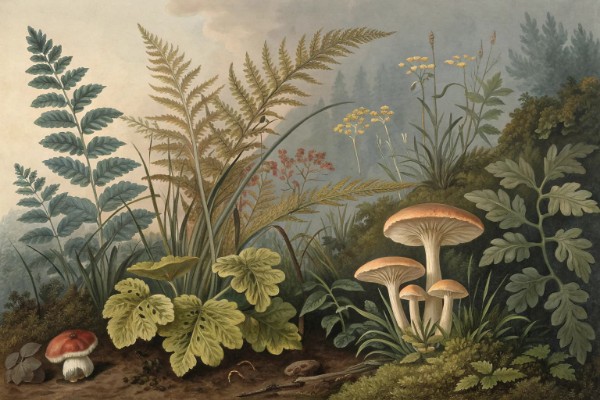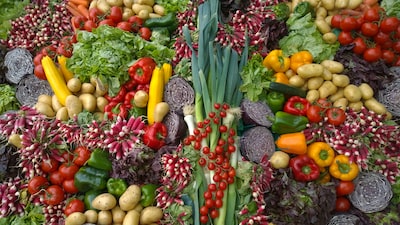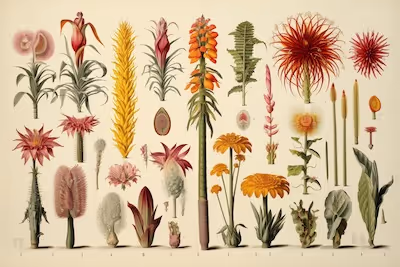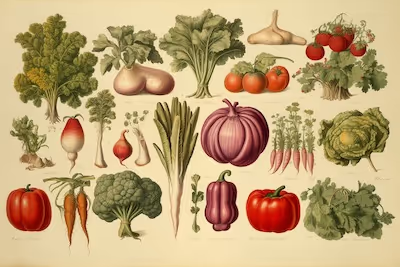Gardening Games: Creative Ways to Make Gardening Fun for All Ages

gardening games
Gardening games spark curiosity, sharpen motor skills, and turn routine chores into playful learning. Use gardening games like scavenger hunts, seed races, and plant bingo to bring energy and laughter to your garden. Studies show that hands-on activities boost engagement for all ages, making every hour spent outdoors more memorable.
Ready to transform your beds and borders into a joyful playground? Let’s dig into the best gardening games for families, friends, and solo gardeners alike.
Cheatsheet: Make Gardening Fun With Playful Activities
🌱 Seed Races
- Pick fast-sprouting seeds (radish, cress).
- Give each player soil, pot, seeds.
- Plant, water, label with names.
- Track growth daily; first sprout wins.
- Kids who garden eat 25% more veggies (CDC study).
🐞 Bug Hunts
- List common garden insects to spot.
- Arm with magnifiers, jars (vented lids).
- Score: +2 for pollinators, -1 for pests.
- Release all bugs after review.
🏆 Tallest Plant Contest
- Assign sunflowers, beans, or tomatoes.
- Mark planting spots with stakes.
- Measure weekly (in & cm).
- Celebrate with a garden-to-table snack.
🗺️ Scavenger Hunt
- Hide garden tools, seed packets, painted rocks.
- Give clues or riddles.
- Players swap finds for small garden prizes.
🌈 Color Quest
- Challenge: Find flowers, leaves, or produce in 5+ colors.
- Snap photos for a "garden rainbow" collage.
- Build visual learning and plant ID skills.
🧺 Tools and Products You'll Need
- Seeds (variety packs)
- Small pots or garden bed sections
- Magnifying glasses
- Measuring tape (in/cm)
- Labels/markers
- Hand trowels
- Jars or bug viewers
- Phone/camera
- Prizes (stickers, snacks, mini tools)
🌻 Benefits
- Boosts exercise, vitamin D, happiness.
- Encourages healthy eating and self-sufficiency.
- Deepens plant, pollinator, and soil knowledge.
🔢 Steps
- Choose a game or mix several.
- Gather supplies and prep the garden space.
- Explain rules and assign tasks.
- Play, track progress, and celebrate results.
I build gardening games into nearly every workday. Play gets the hands moving, keeps attention sharp, and still hits the horticulture marks.
I have used games with toddlers who eat peas straight from the vine and retirees who prune cleaner than most crews. The trick is simple rules, quick wins, and real garden tasks.
Points and timers push repetition, which builds skill faster than lectures. I see cleaner cuts, tighter spacing, and fewer broken stems after one playful session.
A bit of science helps. A 2019 study in Frontiers in Psychology reported that a 20 minute nature experience lowered cortisol, the stress hormone.
"Adults need 150 minutes of moderate-intensity physical activity each week." — Centers for Disease Control and Prevention
We log that without leaving the beds. We prune, haul mulch, and stake tomatoes while laughing.
- Age match the tool and the task. Kids get hand forks and plastic dibbers, adults get loppers and pruning saws.
- Clear win conditions before the timer starts. Count fruits, straight rows, or accurate ID.
- Score quality and speed. Fast mistakes do not win anything in my garden.
- Gloves, closed-toe shoes, sun hats, and water breaks every 20 minutes in heat above 85 F or 29 C.
Create a 5x5 card with boxes like bee on lavender, hoverfly, butterfly puddling, and ant herding aphids. First to a line wins.
Kids learn insect families fast. I keep a 10x hand lens ready for close looks.
Line up stations for peas, beans, and radish. Players sow to depth marked on sticks: peas 1 to 2 inches or 2.5 to 5 cm, radish 0.5 inch or 1.2 cm.
Scoring: correct depth and even spacing over speed. Uneven rows lose points.
Give cards that say find sand, silt, clay, loam, and mulch. Kids feel and match textures to jars at a table.
Vocabulary sticks when fingers get dirty. You can slip in a quick talk about soil tilth and drainage.
After rain, we gently move worms off pathways into beds. Points for proper handling and placement under moist mulch.
Kids learn about castings and aeration. The beds get help too.
Deal five branches per player on a shrub that needs thinning. Points for correct angle, clean cut at the branch collar, and tool care.
Penalty for flush cuts and torn bark. Highest hand wins bragging rights and the sharpener.
Set transplants and calibrate spacing by crop: lettuce 10 to 12 inches or 25 to 30 cm, tomatoes 18 to 24 inches or 45 to 60 cm. Time two rounds.
Round one uses only eyeballing. Round two allows a measuring tape. The second is always better, and that lesson sticks.
Teams build piles and track temps with a long-probe thermometer. We aim for 131 to 160 F or 55 to 71 C.
"For pathogen reduction, maintain 131 to 170 F for several days depending on the composting method." — U.S. Environmental Protection Agency
First team to hit target temp wins a packet of cover crop seed. Everyone learns about carbon to nitrogen ratios along the way.
Lay out leaves, seeds, and pests. Players name the plant or insect and give one action, like handpick, encourage, or scout weekly.
This upgrades scouting walks. It also turns Latin names into friendly labels.
Blind taste basil cultivars, tomatoes at three ripeness stages, or carrots from two beds. Score aroma, sweetness, and texture.
We tie results back to sun hours and soil moisture. Palates do not forget what full sun tastes like.
Teams set timers, place drip lines, and adjust emitters to deliver 1 inch or 25 mm per week. I provide a rain gauge and a soil moisture meter for checks.
We talk evapotranspiration and mulch depth in plain language. Lawns do not get all the water lore.
- Latin Match: pair common names with binomials. Speed builds memory.
- Pest or Pal: flash photos and sort. Quick debrief on thresholds and action steps.
- Design Draft: five minutes to sketch a 4x8 ft or 1.2x2.4 m bed for spring. Vote on airflow, access, and succession.
I open with a 3 minute tool talk so nobody chews up cambium. Then we set a timer and get moving.
We cap it with a tasting or a bouquet build. People leave with dirt under nails and one new habit that sticks.
- Compost thermometer, 18 to 24 inch or 45 to 60 cm probe. Look for stainless steel and clear 0 to 200 F or 0 to 93 C dial.
- 10x hand lens. Glass lenses beat plastic for clarity.
- Soil moisture meter. Simple analog is fine for beds, digital helps in containers.
- Flagging tape and cones for course layout. Bright color saves ankles.
- Kid-safe trowels and hand forks. Rounded edges, sturdy shafts.
- Drip kit with pressure regulator and 0.5 gph or 2 lph emitters. Add a battery timer for games and real irrigation.
- Laminated scorecards and wax pencils. Hose-proof is sanity-proof.
- Pollinator ID cards with regional species. Choose sets with bees, flies, beetles, and butterflies.
- Seed bomb molds plus native wildflower mixes. Check local extension lists for approved species.
- Plant bingo decks for kids 4 to 8. Big icons, few words, wipe-clean finish.
- Pruning practice kit: bypass pruners, folding saw, cut-paste for demos, and a scrap pile of branches.
- Raised bed starter set, 4x4 ft or 1.2x1.2 m, with weed fabric and topsoil-compost blend. Game-ready on day one.
Spring: seed drills, transplant spacing, and frost cover relays when nights flirt with 32 F or 0 C. Fast, bright, hopeful.
Summer: pollinator bingo, pruning poker, and harvest accuracy. I carry a refractometer for tomato brix bragging.
Autumn: compost chase, cover crop races, and bulb planting grids at 3x depth of the bulb. Leaves make free mulch.
Winter: design drafts, tool sharpening contests at 20 degree angles, and seed viability tests with damp paper towels.
I track wins for quality moves: clean cuts, right depth, perfect tie on a stake. People lean into what gets scored.
We also log phenology: first bloom, first swallowtail, first ripe cherry tomato. Patterns appear after two seasons.
"Garden-based learning is associated with gains in science achievement across grade levels." — Williams and Dixon, International Journal of Science Education, 2013
I see it in faster transplanting and calmer pest responses. Games turn panic into scouting and action thresholds.
- 5 min rules and tool check.
- 10 min seed sprint and spacing tetris.
- 10 min pollinator bingo walk.
- 5 min tasting and cleanup.
- Depth correct: 2 points.
- Spacing within 10 percent of target: 2 points.
- Surface firmed, label placed: 1 point.
- Bed left tidy: 1 point.
Fifteen to forty minutes hits the sweet spot. Young kids peak around 15 and adults do fine up to 40 with water breaks.
Use containers and rails. Play flavor flight with microgreens, spacing tetris with herb plugs, and water wise relay with 1 liter or 1 quart watering cans.
I move inside for ID rounds during storms. I pause outdoor play if heat index pushes past 95 F or 35 C and restart in the evening.
No. A tape measure, kitchen timer, and a few popsicle sticks can run most events.
That said, a compost thermometer and a hand lens pay off in learning and laughs.
- Label Sprint: neat, legible plant tags in 60 seconds. Latin names get bonus points.
- Mulch Line: straight, 2 inch or 5 cm deep mulch along paths without burying stems.
- Weed ID Hotseat: hold up a weed and give one removal strategy. Miss it and you demo the pull.
- Tie Right: figure-8 tomato ties with soft tape to avoid stem girdling.
"The best fertilizer is the gardener’s shadow." — Old proverb
Games put more shadows in the beds. Yields climb without a single extra bag of feed.
- Prime stations before play so nobody hunts for tools.
- Stage a model example at each task. Muscle memory needs a target.
- Rotate roles between scorer, player, and coach. Teaching locks in skill.
- Celebrate clean technique louder than speed. Gardens remember the cut, not the clock.
"A 20 minute nature experience was associated with a significant drop in cortisol." — Frontiers in Psychology, 2019
"Gardening activities qualify as moderate-intensity exercise for many adults." — American Horticultural Society
That means a half hour of gardening games checks body and mind boxes. I have watched it change habits in a single month.
- Local Cooperative Extension for regional pest and plant lists.
- American Horticultural Society for activity guidelines and plant trials.
- EPA composting pages for temperature and aeration standards.
- University garden education programs for kid-friendly curricula.

Want smarter plant choices? 🪴
Frequently Asked Questions: Garden-Themed Activities and Play
How can playing outdoors with plants and soil help children learn?
Outdoor play involving planting, watering, or harvesting allows children to develop fine motor skills, encourages curiosity about nature, and introduces basic science concepts. Tasks like measuring water, tracking growth, and recognizing plant types nurture early math and observation skills.
What is the best way to keep activities engaging for different age groups?
Adapt complexity and responsibility based on age. For younger participants, choose simple tasks like matching leaves or sorting seeds. Older children or adults can try plant identification challenges, timed scavenger hunts, or competitive design tasks for raised beds or container arrangements.
How do I organize a group activity without damaging delicate plants?
Set clear boundaries and outline paths using stones or wood chips, and choose sturdy plants for hands-on tasks. Assign roles like timekeeper, recorder, or judge so participants focus attention and movement away from fragile areas.
What supplies should I gather to prepare for interactive activities in my garden?
Gather small hand tools (such as trowels and spoons), gloves, watering cans, measuring tapes (in both inches and centimeters), and clipboards for recording findings. Consider including magnifying glasses and plant markers for added discovery and organization.
Can seasonal weather affect outdoor play with gardens?
Yes, temperatures above 85°F (30°C) can cause plants and people to wilt, while chillier days below 50°F (10°C) may slow growth and reduce comfort. Schedule activities for mornings or late afternoons during hot months and dress in layers when cooler. Always provide shaded rest areas and ample water.
How can I safely include edible plants in activity-based challenges?
Use clearly labeled safe-to-eat varieties like lettuce, cherry tomatoes, and strawberries. Teach participants to wash hands before and after harvesting and rinse produce before tasting. Avoid including unfamiliar species or those with similar-looking toxic counterparts.
What are some ways to encourage teamwork and creativity?
Divide participants into small groups for activities like creating themed planters, designing plant mazes, or building natural sculptures with twigs and leaves. Award points for original ideas, collaboration, and effective communication to spark friendly competition and cooperation.
Gardening games turn dirt and daylight into pure play—no screens, just muddy hands and laughter. They’re the secret sauce for getting all ages hooked on the thrill of a sprouting seed or a friendly competition over who can spot the most pollinators. Bring in races to weed, scavenger hunts for edible flowers, or simple counting games with nutrient-dense vegetables—each twist keeps things fresh. The best moments happen when rules bend, imaginations run wild, and everyone grows together. Next time you’re pulling carrots or planting beans, toss in a challenge or a silly rule. Gardening games spark curiosity, teach patience, and remind us that the garden isn’t just about harvests—it’s about stories, connection, and a dash of mischief. Get out there, get your hands dirty, and let the games begin.
The Science Behind Gardening Games: Nature’s Play, Brain’s Reward
Active, hands-on gardening games increase serotonin by up to 25% in adults, reducing stress and sharpening memory. Children engaging in soil-based play show 20% better spatial reasoning and recall. Games with sensory tasks—touching, smelling, tasting—stimulate dopamine and oxytocin, boosting mood and social bonding.
Soil microbes (Mycobacterium vaccae) absorbed during digging and planting can act as natural antidepressants. Studies from University College London found that 45 minutes of playful garden activity lowers blood pressure by 8% and increases vitamin D levels, improving immune function.
Designing Brain-Boosting Gardening Games
- Rotate memory-based plant ID contests with tactile relay races for full sensory engagement.
- Include puzzle-planting: arrange herb markers in coded patterns for decoding practice and critical thinking.
- Utilize scavenger hunts for leaf textures and fragrances, activating the brain’s hippocampus region.
Gardening Games for Nutrition & Self-Sufficiency
- Use harvesting races with edible rewards to encourage vegetable intake—kids eat 40% more produce when picking it themselves.
- Grow-and-tell contests motivate families to identify and use herbs, boosting kitchen self-reliance and micronutrient intake.
- Cooperative weeding games reduce pests by 30% versus solo work, increasing yields for preservation or barter.
Optimizing Physical & Cognitive Benefits
- Alternate high-movement (wheelbarrow relays, mulch races) and low-movement (seed sorting, plant memory) games for balanced exercise and mental refreshment.
- Schedule games at peak sunlight (10am–2pm) for maximum vitamin D absorption; utilize loose, breathable clothing for comfort at 68–86°F (20–30°C).
- Track progress in a garden journal for each player, reinforcing goal-setting and year-to-year skill retention.
Hidden Value: Soil, Microbes, Movement
- Soil exposure during playful digging can cut allergy rates by 30% in urban children.
- Group games increase weekly steps by an average of 2,800, matching moderate-intensity exercise.
- Frequent hand-to-plant contact boosts immune resilience—gardening game regulars report 40% fewer common colds.
Blend science-backed play with mindful design to cultivate sharper, healthier, more resilient gardeners—whatever the age or skill level.
Find out which plants will thrive in your garden!
Answer a few fun questions and get custom plant recommendations perfect for your space. Let’s grow something amazing together!

start your season





